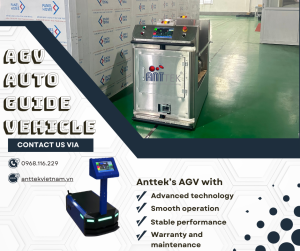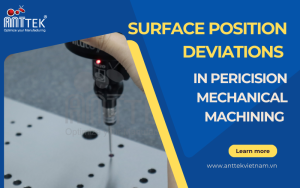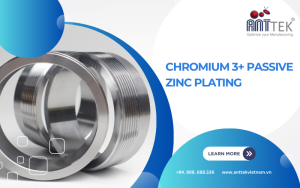Concentricity in Precision Mechanical Processing
Precision mechanical processing is a critical aspect of manufacturing, particularly in industries that demand high levels of accuracy and reliability. One of the essential parameters that engineers and manufacturers focus on is concentricity. Concentricity plays a pivotal role in ensuring the functionality, performance, and longevity of mechanical components and assemblies.
What is Concentricity?
Concentricity refers to the condition where the geometric center points of two or more features, such as bores, cylinders, or shafts, share the same axis or centerline. In simpler terms, concentricity ensures that these features have a common center, and any deviation from this common centerline is minimized or controlled within specified limits.

Importance of Concentricity
Performance and Functionality
Concentricity is crucial for the optimal performance and functionality of mechanical components. In applications like bearings, gears, and rotating assemblies, maintaining concentricity ensures smooth operation, reduced wear and tear, and enhanced efficiency. Any deviation in concentricity can lead to uneven loading, vibration, and premature failure of components.
Quality and Reliability
Achieving and maintaining concentricity within tight tolerances is a hallmark of quality manufacturing. Components with high concentricity are more reliable, have a longer service life, and contribute to the overall quality of the end product. Manufacturers adhere to stringent concentricity requirements to ensure consistent product quality and customer satisfaction.
Cost-Effectiveness
In precision machining, achieving the desired concentricity minimizes material waste and reduces the need for rework or scrap. This efficiency translates to cost savings for manufacturers and customers alike. Moreover, components with precise concentricity often require less mainte nance and replacement, leading to long-term cost-effectiveness.
nance and replacement, leading to long-term cost-effectiveness.
Factors Affecting Concentricity
Machine Accuracy
The precision and accuracy of the machining equipment play a vital role in achieving desired concentricity. High-quality machines with advanced control systems can produce parts with tighter tolerances, ensuring better concentricity.
Tooling and Fixturing
Proper selection and maintenance of cutting tools, fixtures, and workholding devices are essential for maintaining concentricity during machining operations. Improper tooling or fixturing can introduce errors and compromise concentricity.
Material Properties
The material being machined, its hardness, and its machinability can affect concentricity. Understanding the material properties and selecting appropriate machining parameters are crucial for achieving consistent concentricity.
Operator Skill and Experience
The skill level and experience of the machine operator can significantly impact concentricity. Proper training and adherence to machining best practices are essential for producing parts with high concentricity.
Concentricity is a critical parameter in precision mechanical processing that significantly influences the performance, quality, and cost-effectiveness of mechanical components and assemblies. Achieving and maintaining precise concentricity requires attention to detail, high-quality equipment, proper tooling, and skilled operators. As industries continue to demand higher levels of precision and reliability, concentricity will remain a key focus area in precision mechanical processing. Manufacturers must prioritize concentricity to ensure the delivery of high-quality, reliable products that meet customer expectations.

















